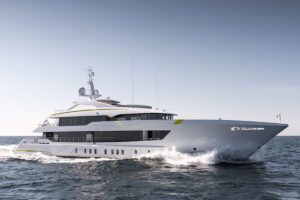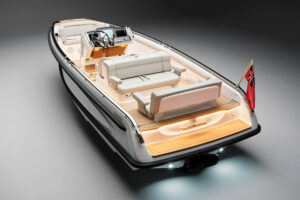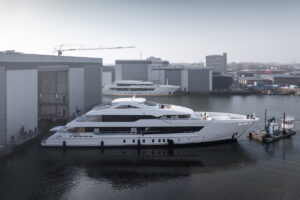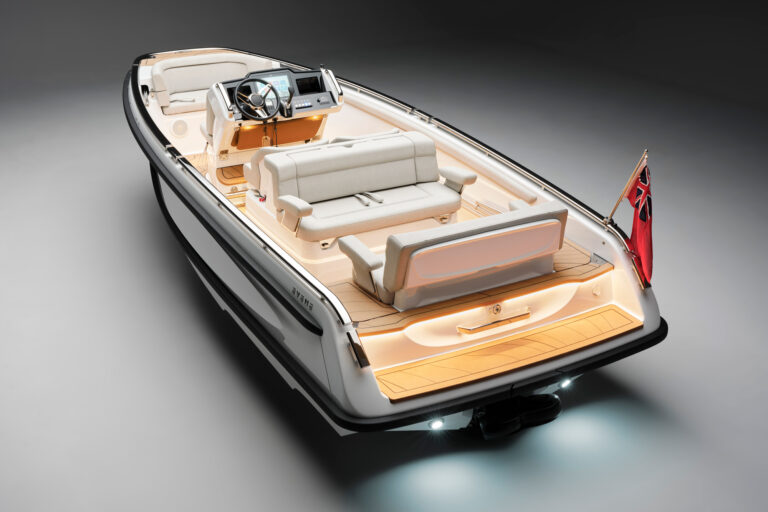
My pal Jim has been dabbling in the creation of a new production yacht for several years. I considered it a harmless mental exercise until he shared an email that suggested he was crossing the dream-reality horizon. It was a note from his builder suggesting the time had come to choose a color. Jim was seeing red.
“The right color can make the difference between success and failure of a new project,” Jim lectured.
“What about Henry Ford?” I countered. “Any color so long as it is black worked for him.”
“Old school, Coyle,” Jim said. “The waterfront is a battleground of ideas.”
“Hell, it’s a war zone,” I grumbled. “Picture windows, monolithic masts, dreadnought stems. At this point, do you really think color matters?”
Jim insisted that I review the builder’s proposed palette, a rather chalky selection of light spring shades. “Pastels, how interesting,” I said, attempting to offer encouragement. It was expected. In my role as Jim’s consultant, my opinion is less important than my service as his enabler.
Jim pressed on: “Coyle, you’re a designer. I’m thinking of something a bit louder. How about red?”
I recalled a rose-colored 90-footer that I had penned in the 1990s. “Been done,” I told him.
It’s hard to believe there was a time when boats were simply white. I attended my first Fort Lauderdale International Boat Show in 1980 to interview for a design position with Tom Fexas. It was easy to spot him showing off his 44-foot Midnight Lace. The yacht’s black topsides stood out in the sea of white fiberglass. He had not followed Ford; his inspiration had been childhood memories of a commuter-yacht design that had cruised to Wall Street on Long Island Sound.
The first Midnight Lace was built as a one-off vessel with closed-cell foam coring fastened to a disposable wooden jig. In this process, the outer skin was laid up and faired first. The jig was then removed and the inner skin applied. Tom spent weeks pushing and pulling a long board, essentially a 3-foot piece of sandpaper used to fair the outer skin.
I thought of him and Midnight Lace as I considered Jim’s hull-color challenge.
“Any dark color or black will do,” I offered.
“Do you see a trend?” Jim asked.
“No,” I told him. “Metallic brown, silver or gold seem to be the flavors of the month. My suggestion is practical, if you want great tooling.” Like the outer skin of a one-off, the plug for Jim’s hull mold would have to be faired, and dark colors demand extra sandpaper.
Jim was still seeing red.
“Do you have a picture of the motoryacht you mentioned?” he asked.
I didn’t have one handy, so I called her builder in the hopes that he had one buried in the archives. He didn’t bother to look. “Red topsides. Coyle, that boat was white, always has been. Still is,” he told me.
So much for memorable.
I shared my discovery with Jim, pointing out how little a difference in color had meant to me.
“Forget Ford and Fexas,” I suggested. “How about something really different? White!”









